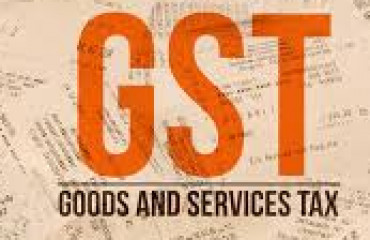
The now six-year-old tax regime has resulted in multiple benefits for the government and taxpayers, even as the GST Council has set an example of cooperative federalism, but it still needs to rationalize taxes and not worry about collections that are unlikely to get hit
The now six-year-old tax regime has resulted in multiple benefits for the government and taxpayers, even as the GST Council has set an example of cooperative federalism, but it still needs to rationalize taxes and not worry about collections that are unlikely to get hit
 Premium
PremiumAhead of the launch of the goods and services tax (GST) on 1 July 2017, this newspaper on 6 June 2017 had published my piece titled 'Indian GST: Unparalleled Tax Reform' in which I had highlighted the unique features of India's GST regime such as the Dual GST structure; Integrated GST mechanism; invoice matching; single digital interface and the establishment of a GST Council. The concluding line of my piece read: "The gains of this little pain (transition to new GST regime) are going to be many and long-lasting for the Indian economy". Six years after the introduction of GST, the general consensus is that the little pain has been worthwhile.
Six years is not a very long time to evaluate the impact of any mega game-changing reform. Nevertheless, it is good enough for stocktaking. The unique design of India's GST—with Dual GST and Integrated GST—has stabilized over time. The GST Council has emerged as a model of cooperative federalism wherein the Centre and states are willing to pool their sovereignty for the good of the country. The Council since its inception has played a key role in decision-making on various aspects of GST, including tax rates, exemptions and revenue-sharing between the central and state governments. It has held 49 meetings so far and except for one, all decisions have been taken by consensus. Despite initial hiccups and difficulties, the Goods and Services tax Network (GSTN) has done a commendable job by providing a single interface for the taxpayers and governments. GSTN's technology infrastructure is common for the central and state governments. The system virtually eliminates the need for the taxpayer to interact with tax authorities as all processes, including registration, filing of returns and tax payments, can be completed online. The number of GST registrations has increased by nearly 14% compounded annually from nearly 65 lakh to about 1.4 crore in six years. GST registrations have grown across states, leading to greater formalization of India's economy and resulting in higher revenues. GST revenues have grown from ₹8.76 trillion in 2018-19 to ₹13.25 trillion in 2022-23 at a compounded annual growth rate of nearly 11%.
Invoice matching, touted as a unique feature of India's GST, aimed at ensuring that entities do not claim input tax credit (ITC) for taxes that they have not actually paid. However, this was not taken forward as stakeholders considered it to be very compliance heavy. The same objective is now being attempted by making available invoice-wise input supply details to the taxpayer, and the auto population of various data fields in the taxpayer's GST return. Further, to curb GST leakages, the Council has introduced mechanisms of e-way bills and e-invoicing. An e-way bill is required to be carried by the person in charge of transport and prevents tax evasion by way of any unauthorized movement of goods. More than 8 crore e-way bills are being generated every month. Further, a need was felt to standardize the electronic invoice format so that there was interoperability of the data. At present, certain notified GST-registered businesses are required to generate e-invoices for business-to-business transactions. E-invoices help minimize fraudulent GST invoices and ensure that input tax credit is claimed on actual GST invoices.
India's GST has mainly four tax slabs of 5%, 12%, 18% and 28%, with some exceptions for gold and real estate. In addition, a few items such as food, education and healthcare are exempt from GST. The number of slabs and slab rates have largely remained unchanged in the last six years. A high number of slabs leads to issues of inverted duty structure and complexity in GST administration while high tax rates promote a tendency to evade taxes, which is amply visible at wholesale and retail markets. The number of slabs as well as GST rates at higher slabs are too high as compared to many other large countries. These countries have one standard rate of GST, generally in the range of 10-20%, and then a zero or reduced rate for certain essential goods and services. At the time of launch, different goods and services were put in one of the slabs based on the then existing incidence of taxation. As the GST regime is stabilizing with an increase in revenue collections, the next wave of reforms should see both a reduction in the number of GST slabs as well as the peak rates. When direct tax rates in India are comparable or even lesser than global peers, there is no reason for not having comparable indirect tax rates. Direct taxes in India have shown robust growth despite a reduction in the rates. GST, with a reduced number of slabs and decreased peak rates, should also lead to tax buoyancy.
GST has brought many benefits to the Indian economy, including increased revenues, uniformity in taxation, elimination of cascading of taxes, reduced compliance burden, online system of taxation, abolition of check posts and improved efficiency of logistics. But this is just the beginning, and the best is yet to come.
Arun Goyal is a retired Indian Administrative Service officer presently working as member, Central Electricity Regulatory Commission. He was an additional secretary in the GST Council at the time of launch of GST.
